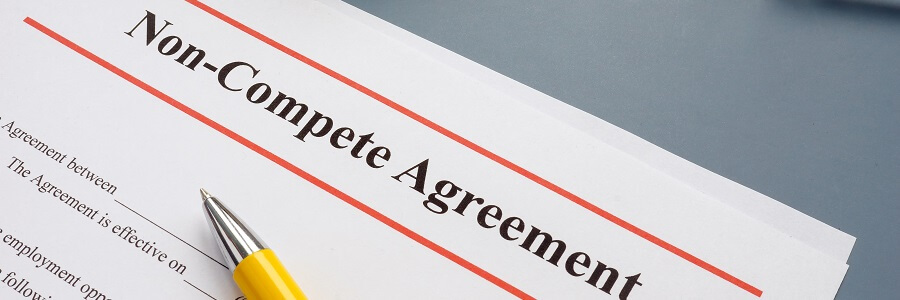How to Onboard New Employees: 5 Tips for Success

Quick look: The stakes are high when it comes to employee onboarding: new hires get their first real feel of their employer during this time, potentially leading to improved retention, engagement, and productivity rates. Unfortunately, only 12% of U.S. employees feel their company did a good job onboarding them. From setting program goals to surveying new staff on their experience, these five tips can help business leaders optimize their onboarding process.
An engaged, productive, and fulfilled workforce is what drives a company’s success—and it can be cultivated even before an employee’s first day begins through an effective onboarding process.
The Society of Human Resource Management (SHRM) defines employee onboarding as “the process of integrating a new employee with a company and its culture.” Onboarding includes administrative tasks such as completing necessary paperwork and setting up workstations and network access, as well as establishing role expectations, introducing the new hires to colleagues, and enveloping them into the company culture.
Why is employee onboarding important?
First impressions matter, and the employee onboarding process (or lack thereof) can make a lasting mark on staff.
Effective onboarding is associated with various organizational benefits, including:
- Improved employee retention
- Increased job satisfaction
- Boosted productivity
- A stronger understanding of the company’s culture and the worker’s job responsibilities
- Improved team dynamics
- Minimized wasted investments
Further, Gallup found that 70% of workers who had high-quality onboarding experiences reported they had “the best possible job,” and these employees were 2.6 times more likely to be extremely satisfied with their workplace.
However, many businesses may have room for improvement. Gallup also discovered that just 12% of U.S. workers said their company did a good job of onboarding, and approximately 20% reported that their most recent onboarding was poor or nonexistent.
How to onboard new employees
The best onboarding begins before an employee’s first day and can continue throughout their entire first year with the organization.
It’s recommended that a successful onboarding program helps new hires answer the following five questions:
- What do we believe in here?
- What are my strengths?
- What’s my role?
- Who are my partners?
- What does my future look like here?
To get started, employers should consider the following preboarding activities:
- Invite the new employee to tour the office
- Send information about the organization and employee benefits
- Mail a care package, including company merchandise, snacks, etc.
- Connect the new hire with an internal “buddy” to whom they can ask questions
- Prepare the employee’s computer and other devices and set up their logins
- Provide an itinerary for the first week
- Notify current employees about the new hire and inform anyone training them
On the first day, it’s recommended that businesses:
- Meet with new hires upon their arrival
- Conduct a new hire orientation that educates new staff on:
- The company’s structure, mission, and values
- The employee handbook and major policies
- Required employee paperwork
- Administrative procedures
- Mandatory training
- Provide a tour of the facility
- Plan for the new hires to eat lunch with their trainer or new teams
- Introduce new staff to their mentors, if applicable
Similarly, during the first week, organizations can:
- Introduce new hires to the different programs and technology their roles require
- Provide a high-level overview of job responsibilities
- Ask new employees to begin specific training programs
- Task managers and mentors to check in daily with the new hires to help them acclimate and answer any questions
The new workers’ managers should do the following during the first month:
- Schedule weekly one-on-one meetings
- Provide training on more advanced duties
- Increase the number of work assignments
- Check in with the new hire at least once per week
Lastly, during the first 90 days (and beyond), new employees can:
- Continue to have one-on-one meetings with their managers (and can further space out the meetings, if appropriate)
- Increase their number of and complexity of assignments
- Receive regular performance feedback from their managers
- Work together with their managers to set short-term, 90-day goals
- Be invited to join committees and/or take on new responsibilities
- Begin to brainstorm professional development opportunities within the organization
5 best practices for onboarding new employees
Employee onboarding involves many moving parts, and while creating a thorough strategy can be daunting, following a set of best practices can be helpful. From determining overall program goals to measuring success through key metrics, here are some onboarding tips to guide employers as they bring on new talent.
1. Establish goals and guidelines
It’s easier to determine if your organization has successful onboarding if you have goals and guidelines in place. As business leaders develop their onboarding programs, they should ask themselves questions including:
- When will onboarding start? How long will it last?
- What impression do we want to instill upon new hires?
- What do we want new employees to know about our company culture and work environment?
- What roles will HR, direct managers, coworkers, and our professional employer organization (PEO) partner, if applicable, play in the onboarding process?
- What goals do we want to set for new staff?
- How will we gather feedback on the onboarding program?
2. Leverage HRIS software
Manually completing human resources (HR) tasks is cumbersome. HR information system (HRIS) software helps employers automate onboarding steps, especially when it comes to new hire paperwork. It can improve the employee experience by providing a streamlined workflow and allowing new hires to complete required forms in a timely manner, possibly even before their first day.
Additionally, HRIS software can decrease HR staff’s workload and enable them to focus less on housekeeping tasks, and more on creating a memorable onboarding experience.
3. Measure outcomes
An HRIS also gives employers the power of actionable data, which can highlight areas of strength within their onboarding programs and opportunities for improvement.
Some HR metrics to consider tracking include:
- New hire or early turnover, which calculates the number or percentage of employees who left within their first year
- Training time per employee, or the average amount of training time each employee has received
- Training cost per employee, which demonstrates how much on average the company spends on learning and development per worker
- Onboarding satisfaction, which can be measured by administering an employee pulse survey
4. Fine-tune as needed
With valuable data in your hands, it’s easier to track what has worked and what hasn’t and use those insights to determine how to improve your onboarding process.
It’s important to note that sometimes a standard process works best, while other times, the onboarding strategy should be altered based on the specific new hire’s personality, communication preferences, work location, and more.
5. Re-onboard when necessary
While onboarding can set new employees on a successful path when starting at a company, re-onboarding can help more tenured staff gain a fresh perspective, become more engaged, and feel more supported in their roles.
Re-onboarding can be helpful for anyone, but especially those who are underperforming or seem to be confused, disinterested, or demotivated. A re-onboarding program can cover many topics, including:
- New company expectations and policies (i.e., remote or hybrid schedules and video conference etiquette)
- A review of the company’s latest benefits, perks, and resources
- Roles and responsibilities of each department, especially those with new functions or leaders
Employee onboarding tools and resources—all in one place
An effective onboarding program has many components, from administering I-9 forms to surveying new hires on their experience. For busy HR staff at small- and medium-sized businesses, these tasks can eat into their already tight schedules.
That’s where a PEO partner can help. PEOs offer a range of high-quality HR, employee benefits, and risk and compliance services, helping small businesses attract and retain top talent, stay compliant, and focus on more strategic projects.
For example, ExtensisHR, a nationally Certified PEO, offers:
- Access to a dedicated, SHRM-Certified HR Manager who can help you develop an onboarding program, share best practices, and more
- Work Anywhere®, a mobile-first HRIS that enables you to maximize productivity, manage HR tasks, consolidate workflows, and view actionable data—from anywhere, at any time
- Full-cycle recruiting services, from job advertisement creation to offer letter consultations (included in ExtensisHR’s PEO solution at no extra charge)
- Free guides, checklists, and forms to help you prepare for every stage of the interview and hiring process
- Affordable access to 15Five, a leading performance management platform that facilitates engagement surveys, feedback gathering, weekly employee check-ins, one-on-one meetings, performance trend tracking, and more
The right tools and support can help even the most time-strapped small businesses develop a thorough, successful onboarding strategy that makes an immediate positive impression on new hires and fosters an engaged, tenured workforce.
Is your business looking to optimize its employee onboarding program? Contact the experts at ExtensisHR today to discover how we can help.



